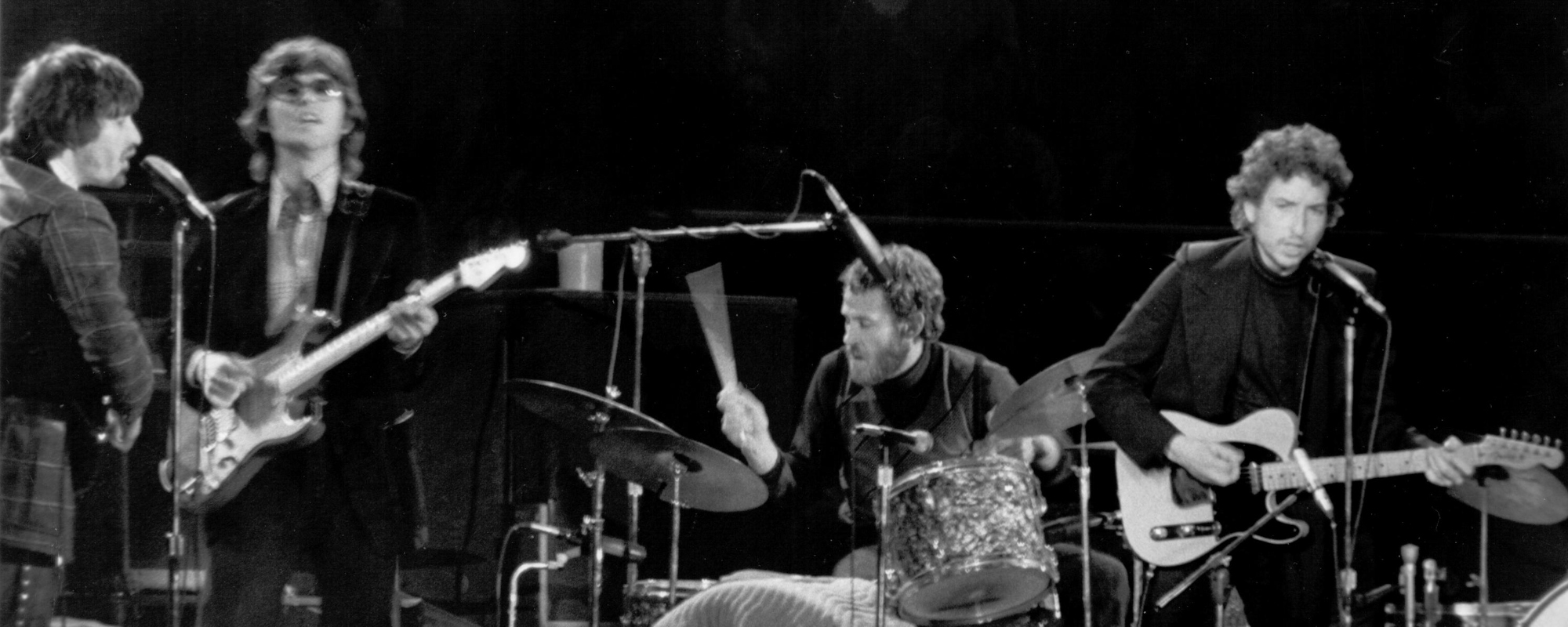The Byrds knew how to get out ahead of a trend. In the mid-60s, Roger McGuinn’s guitar drone helped set the tone for the psychedelic rock boom. Later, the arrival of Gram Parsons and the album Sweethearts Of The Rodeo stamped them as forefathers of country rock.
Videos by American Songwriter
Before all that, there was Mr. Tambourine Man. Their 1965 debut album helped create a genre known as folk rock. It also introduced the world to five men who, together and springing off into other musical directions, would have a profound influence on a multitude of musical styles.
Byrds Take Off
The Byrds’ story began with Roger McGuinn and Gene Clark, a pair of Beatles-loving Los Angelenos who started playing together in 1964. David Crosby joined up with them, his high harmonies providing an indelible boost to their already-potent blend. Drummer Michael Clark and bassist Chris Hillman made the group a quintet.
When they were beginning to compile the songs that would make up their debut album, their manager brought them an early version of a then-unrecorded Bob Dylan song called “Mr. Tambourine Man”. Dylan hadn’t used it on his 1964 album Another Side Of Bob Dylan because he didn’t like the recording.
The Byrds initially didn’t think all that much of it either. But they decided to try it anyway, changing the tempo and giving it a steady rock backbeat. McGuinn played a circular pattern on his 12-string guitar. Dylan, who shared a label with the newly signed band, heard this version and was blown away by the audacious take.
Making Their Debut
When The Byrds officially recorded “Mr. Tambourine Man”, they did so with the best of the best of LA’s Wrecking Crew studio players playing all instruments except guitar, which was handled by McGuinn. (McGuinn, Clark, and Crosby sang the vocals.) To their credit, the band convinced producer Terry Melcher to allow them to play on the rest of the album.
Once they realized what could be done when embellishing Dylan’s somewhat simple, acoustic originals, they dove back into that well again and again. Four Dylan tracks appear on the Mr. Tambourine Man album. The band also provided original material, most of which was penned by Clark, a budding songwriting genius.
In April 1965, Bob Dylan released Bringing It All Back Home, his first album to prominently feature electric instruments. But Dylan focused on a cacophonous, blues-based sound. Two months later, the Mr. Tambourine Man album arrived. With chiming guitar, steady rhythms, and clean harmonies, it stood out as the purest melding of folk and rock yet attempted.
The Music of ‘Mr. Tambourine Man’
Upon listening to Mr. Tambourine Man, it becomes clear how easy a transition it was for The Byrds to go from folk rock to acid rock. There’s something inherently mesmeric about the vocal blend, the tripping guitar notes, and even the slightly bleary lead vocals of McGuinn and Clark.
But the debut album certainly focuses on the melodic similarities between folk and rock more than any subsequent Byrds’ record. Indeed, most of Clark’s compositions only share with folk a confessional sensibility. Songs like the churning “Feel A Whole Lot Better” and the mournful “Here Without You” are more British Invasion than Newport Folk.
When the band covers Dylan, they offer a kind of solemnity to his songs that Bob himself, always a bit of a mischief-maker, couldn’t deliver. Perhaps that approach is overkill on the light-hearted “All I Really Want To Do”. But when they tear into anthems like Dylan’s “Chimes Of Freedom” or Idris Davies and Pete Seeger’s “Bells Of Rhymney”, they make those songs momentous occasions that deserve the utmost attention.
As mentioned above, it wasn’t long before The Byrds frequented other musical avenues. Their ever-changing lineup prevented them from sticking with any sound too long anyway. On Mr. Tambourine Man, however, their pristine, slightly more potent reimagining of folk song forms left perhaps the most lasting impact of all the musical hybrids they would attempt.
Photo by Ivan Keeman/Redferns












Leave a Reply
Only members can comment. Become a member. Already a member? Log in.